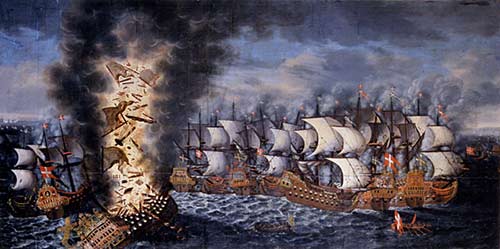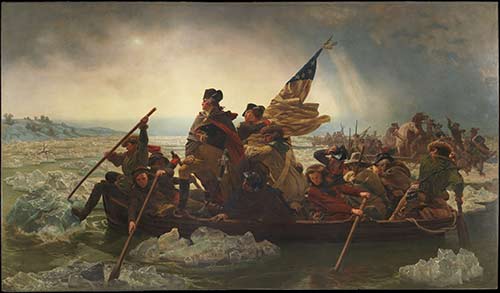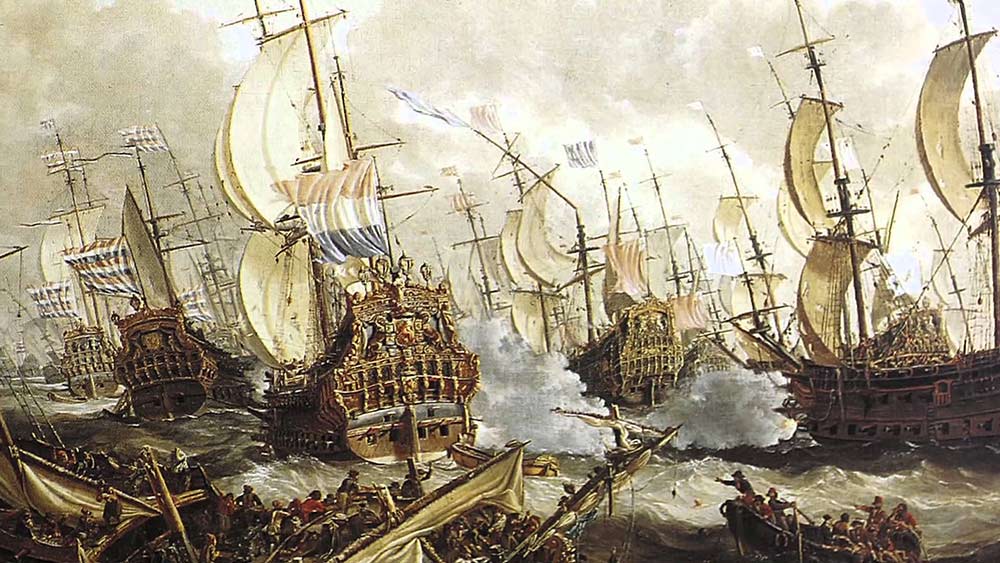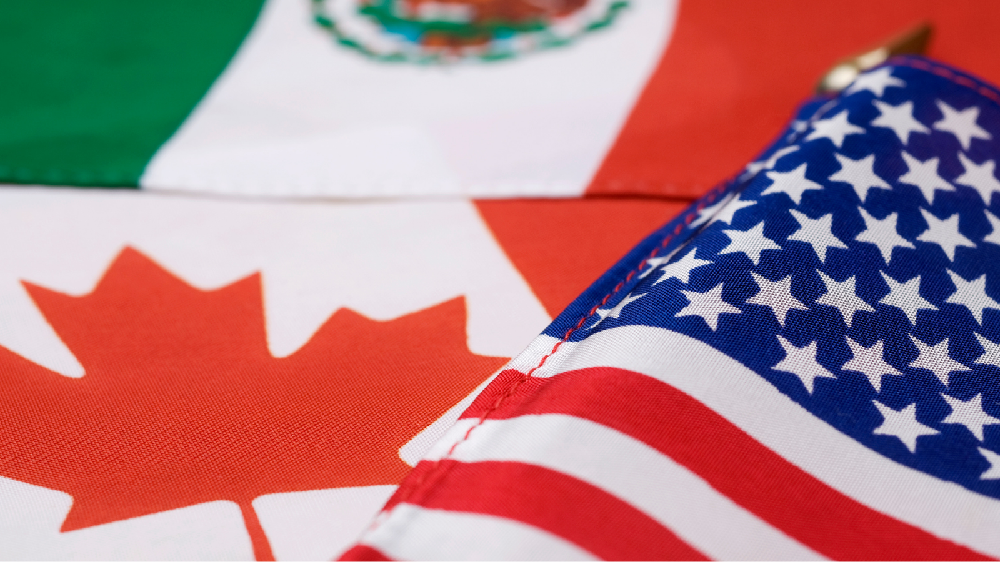
Spoiler alert: all 3 involve the British Empire.
War is always an ugly thing, regardless of the causes or the outcomes. Here are the biggest, most famous wars (and some honourable mentions) in modern history fought over the control of trade routes and commodities, and their impacts on global trade.
Peace is the natural effect of trade. –
Baron Charles de Montesquieu
1. Opium Wars
The two Opium Wars were fought between the British Empire and China in the mid-1800s.
Often the first trade-incited wars that come to mind for many, the Opium Wars were all about Britain’s access to trade with China, and China’s conflicting desire to remain isolated and independent from the rest of the world.
First Opium War – AKA the Anglo-Chinese War (1839-1842)
Cause of conflict:
Britain sought to even the imbalance in trade between the United Kingdom and China caused by the increase in demand for silk, porcelain and tea in Britain, and the all but non-existent demand for British commodities in China.
An increasing influx of opium, auctioned by the East India Company to foreign traders, started to find its way into China, disturbing Chinese leaders and causing them to completely shut down trade with Britain as a result.
It all came to a head when Viceroy Lin, acting on behalf of the Chinese Emperor, confiscated 20,000 chests of opium and essentially subjected all foreign merchants to house arrest.
Results:
The British defeated the Chinese at the mouth of the Yangtze and occupied Shanghai. The war officially ended with the signing of the Treaty of Nanking, which resulted in the ceding of Hong Kong to British control.
The treaty also forced five Chinese ports to allow British goods to enter the country: Shanghai, Canton, Ningpo, Fuchow, and Amoy.

Second Opium War – AKA the Second Anglo-Chinese War, the Second China War, the Arrow War, or the Franco-British Expedition to China (1857-1860)
Cause of conflict:
Not completely satisfied by the terms of the Treaty of Nanking, which ended the First Opium War, the British Empire sought war with China once again, with the aims of expanding trade in the region and improving diplomatic relations.
Specifically, the British sought to open all of China to trade with the UK, expand the coolie trade, exempt foreign imports from internal transit duties, and of course, legalize the opium trade.
Results:
Britain was joined by allies in France and envoys from the United States and Russia, all seeking access to trade in China.
After gaining control of several major Chinese cities, signing the treaties of Tianjin and Aigun, and burning the Summer Palaces, the Second Opium War ended at the Convention of Beijing in 1860.
Most notably, the Convention of Beijing opened more than 80 sea ports, guaranteed free passage for foreign traders within China, freedom of religion within China, and of course, legalized the opium trade.
2. First Anglo-Dutch War

We cannot make war without trade, nor trade without war.
– Jan Pieterszoon Coen – Governor General, Dutch East India Company in the Indies
In the first half of the seventeenth century, the Dutch overtook Portugal as the main European traders in Asia, and thus the incredibly profitable trade in spices. They soon had the largest mercantile fleet in Europe, surpassing in size all other European fleets combined.
By the 1650s, Oliver Cromwell, the leader of Britain, had shored up a powerful navy and as tensions built between the two competitive naval powers, the British Commonwealth declared war on the Dutch on July 10, 1652 resulting in the first of four Anglo-Dutch Wars.
Cause of conflict:
Successive English/British states wanted control of all British trade routes and colonies. The Dutch wanted to keep hold of their Portuguese ports and commercial control in Europe.
Politically, tensions had been mounting between the two countries since the English Civil War, which saw Charles I of England, who had strong family ties to the Dutch, beheaded in 1649.
Results:
The English navy was able to gain control of the seas surrounding England, resulting in a monopoly on trade with all British colonies.
However, hostilities between the European naval powers and their commercial rivalry remained alive and well, leading into the subsequent Second and Third Anglo-Dutch Wars.
3. American Revolutionary War

The American Revolutionary War, also known as the American War of Independence, fought from 1775-1783, was about a lot of things to its varying participants.
To those living in America, it was about freedom from British taxes and full independence from Great Britain. The Europeans saw the conflict differently, as primarily a battle over the control of lucrative trade routes and commodities.
The French offered their naval support to the American colonists and joined the battle in 1778. The involvement of the French military added to the European view that the war was simply a new arena in which to fight an existing conflict between France and Britain over control of the resource-rich East and West Indies trade routes.
In fact, many in Britain argued for the abandonment of the fight in the American colonies, to be able to focus fully on their true enemy, the French.
Cause of conflict:
Americans wanted independence from British rule. Both France and England wanted control of East and West Indies trade routes. England wanted to retain control of its American colonies and continue to reap the benefits through taxes, rich natural resources, and access to trade routes.
Results:
As we all know, America won its independence from Britain, marked by the formal British recognition of the Declaration of Independence in 1783 through the Treaty of Paris.
British trade routes, from which they were largely dependent for income, were disrupted and Britain faced mounting national debt and recession.
France was able to threaten Britain’s various shipping routes and territory around the world, pulling them in several different directions at once. France and Britain would meet again only a few years later during the Napoleonic Wars.
Honorable Mentions:
Finnish Soviet War
The Winter War and subsequent Continuation War were fought during the Second World War between Finland and the Soviet Union, primarily due to the latter’s desire to mine nickel in Petsamo. Though the Finns and Soviets fought a series of close battles, the Soviets were able to gain control of the area by the end of the war.
The hostilities incited by the Soviets conflicted with the agreement of the League of Nations (predecessor to the United Nations), and they were promptly removed from the group in 1939.
Iraq invasion of Kuwait
Hostilities between Iraq and Kuwait came to a head in 1990, when Saddam Hussein accused Kuwait of stealing Iraqi oil through slant drilling. Many think this move against Kuwait was simply a means for Iraq to take control of the country’s vast oil reserves.
Another theory is that Iraq, under pressure to pay off the massive debt it accumulated during the country’s war with Iran, wanted oil prices to rise by stoppering production of oil in Kuwait.
Iraq was successful in annexing Kuwait, a move that was unanimously condemned by all major world leaders, the UN and NATO. After repeated failed negotiations, Iraq’s actions in Kuwait eventually led to the Gulf War.









disqus comments